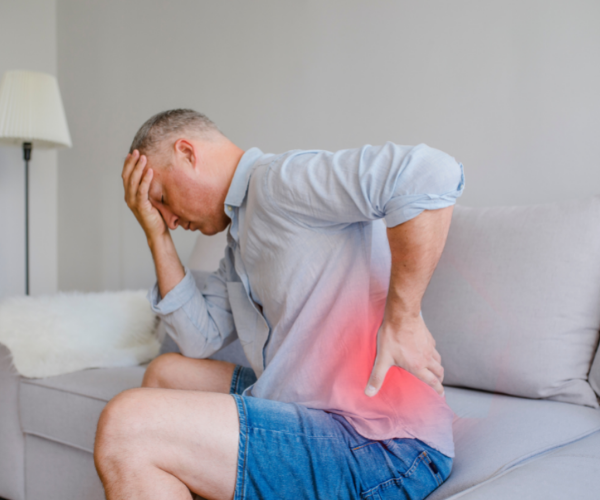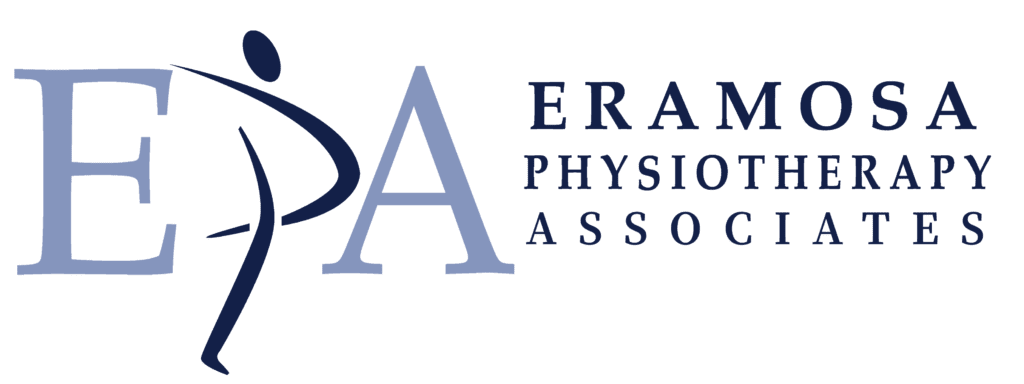What is a Lumbar Sprain/ Strain?
A strain is a pull/tear in the muscle while a sprain is a pull/tear in the ligaments that hold one bone to another. This occurs when a muscle or ligament is pulled beyond its typical length (such as a high impact collision) or when lifting/carrying something that the muscle is not strong enough to support.

Different stages of Lumbar sprain
Muscle strains and ligament sprains are often broken into three different grades:
- Grade 1: Mild injury in which the muscle/ligament fibers are stretched beyond their normal limit but there is no breaking/tearing of the tissue.
- Grade 2: Moderate injury in which the tissue fibers have partial tearing.
- Grade 3: Severe injury involving complete rupture of the muscle or ligament.




Symptoms of a lumbar sprain/strain injury
Symptoms of a Lumbar strain/sprain may include, but are not limited to:
- Pain that occurs immediately or 1-2 days after trauma or excessive use.
- The pain may come on suddenly but can be gradual.
- Pain often involves a spasm of the muscles in the lower back and/or hips.
- Pain with straightening up/movement and better when relaxed/ no pressure is on the affected muscle or ligament.
How is lumbar sprain/strain diagnosed?
Typically a physiotherapist or physician would conduct a thorough assessment including history of the injury, symptom profile, past medical history, and information related to your home, work and exercise life. Pain is usually focused in the lower back and muscles on either side of the spine but at times there can be pain radiating down the legs.
The subjective assessment is followed by a physical exam that includes a range of motion screening, testing of the nerves exiting your lower back (that innervate the skin, muscles and reflexes), testing to look for tension in the nerves and palpation/examination of the lumbar spine. In this case neurological testing is typically normal and the painful muscle and/or ligament can be palpated in the lower back area. Imaging can be done as part of the assessment by a physician to rule out any other contributing structures but with lumbar spine sprain/strain there is typically nothing found on imaging (X-rays, CT scan or MRI).




Treatment options for lumbar sprain/strain
Conservative therapies such as physiotherapy and massage therapy are generally considered to be the best treatment options for lumbar strain/sprain. Treatment typically starts by trying to decrease the pain in the irritated muscle or ligament through gentle movements and modalities such as heat or ice. As the tissues are already stretched we typically avoid stretching in the initial phases of healing unless there is a surrounding muscle that is compensating and needs to decrease in tone. As the muscle/ligament transitions through the phases of acute, subacute and chronic stages of healing (which takes typically 8-12 weeks) the muscles will need to be restrengthened and the client will gradually transition back to their usual activities.
Your physician may also prescribe medication such as muscle relaxants or pain relievers to try and assist with decreasing the irritation in the muscle.
Is Surgery an option for a lumbar sprain/strain?
Most lumbar spine sprain/strains will fully resolve within 8-12 weeks. In some extreme cases the tissues can become sensitized causing chronic and permanent pain. Spinal stimulators can be inserted into the spine as a method to decrease pain but this is done only in extreme and debilitating circumstances after all other conservative treatment methods have failed.


